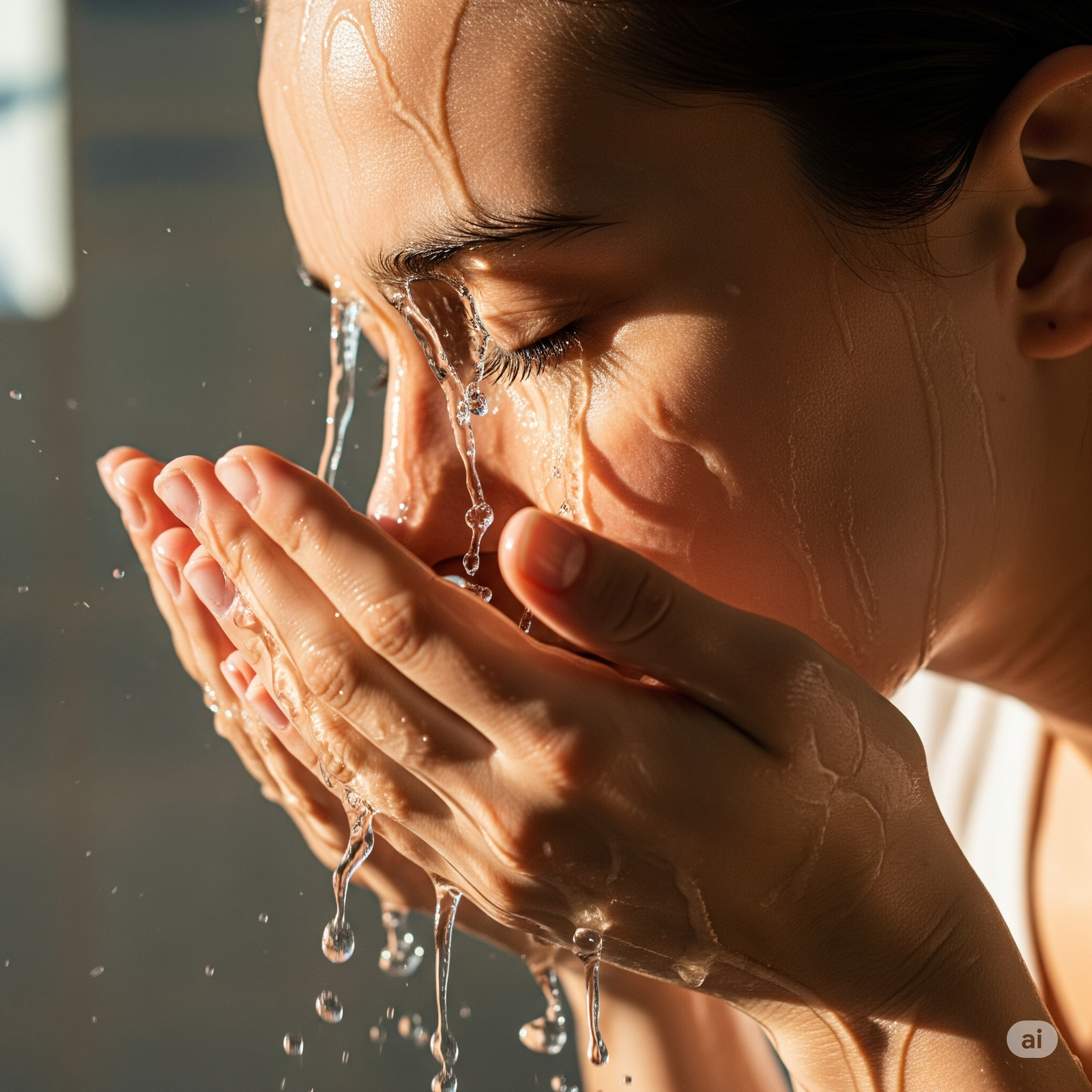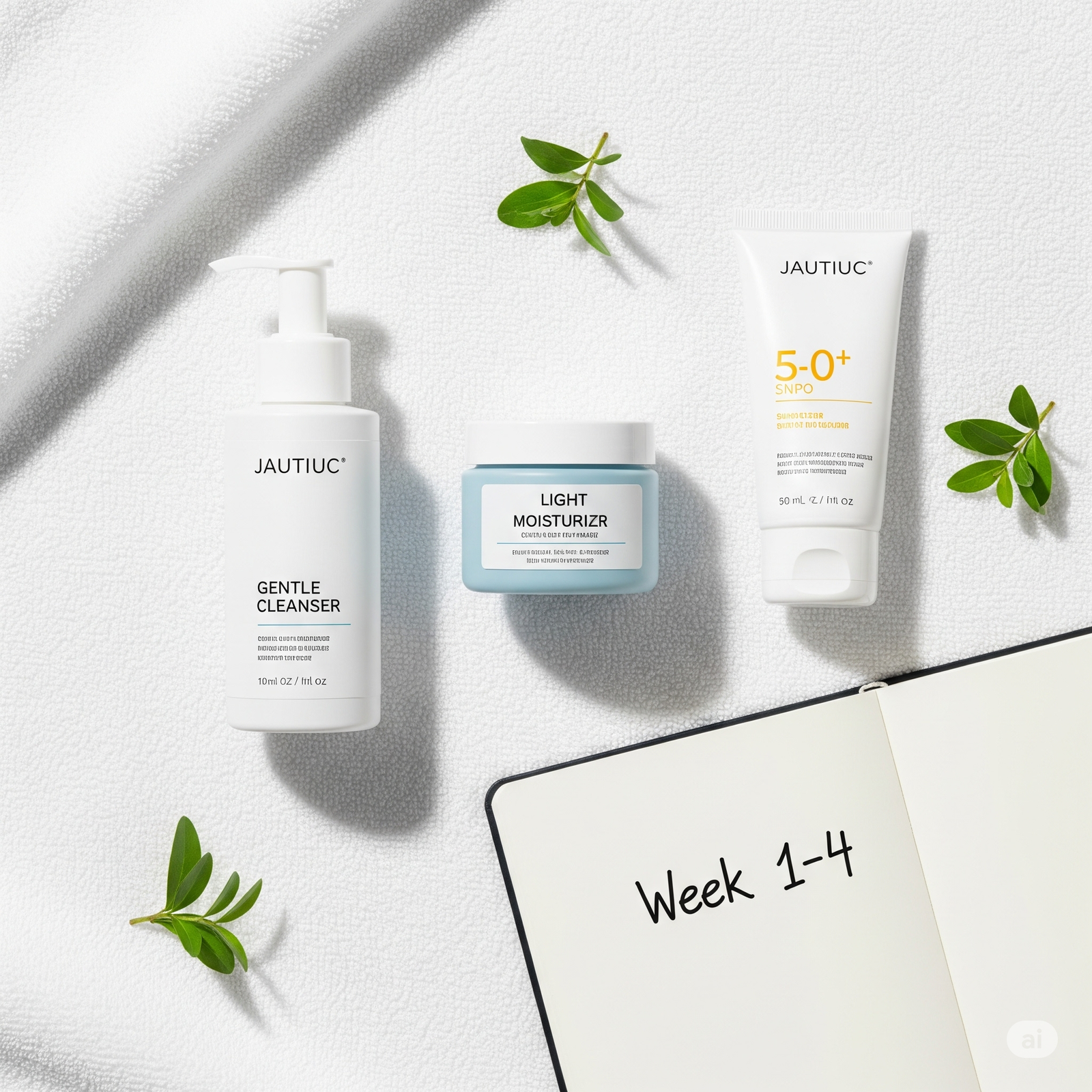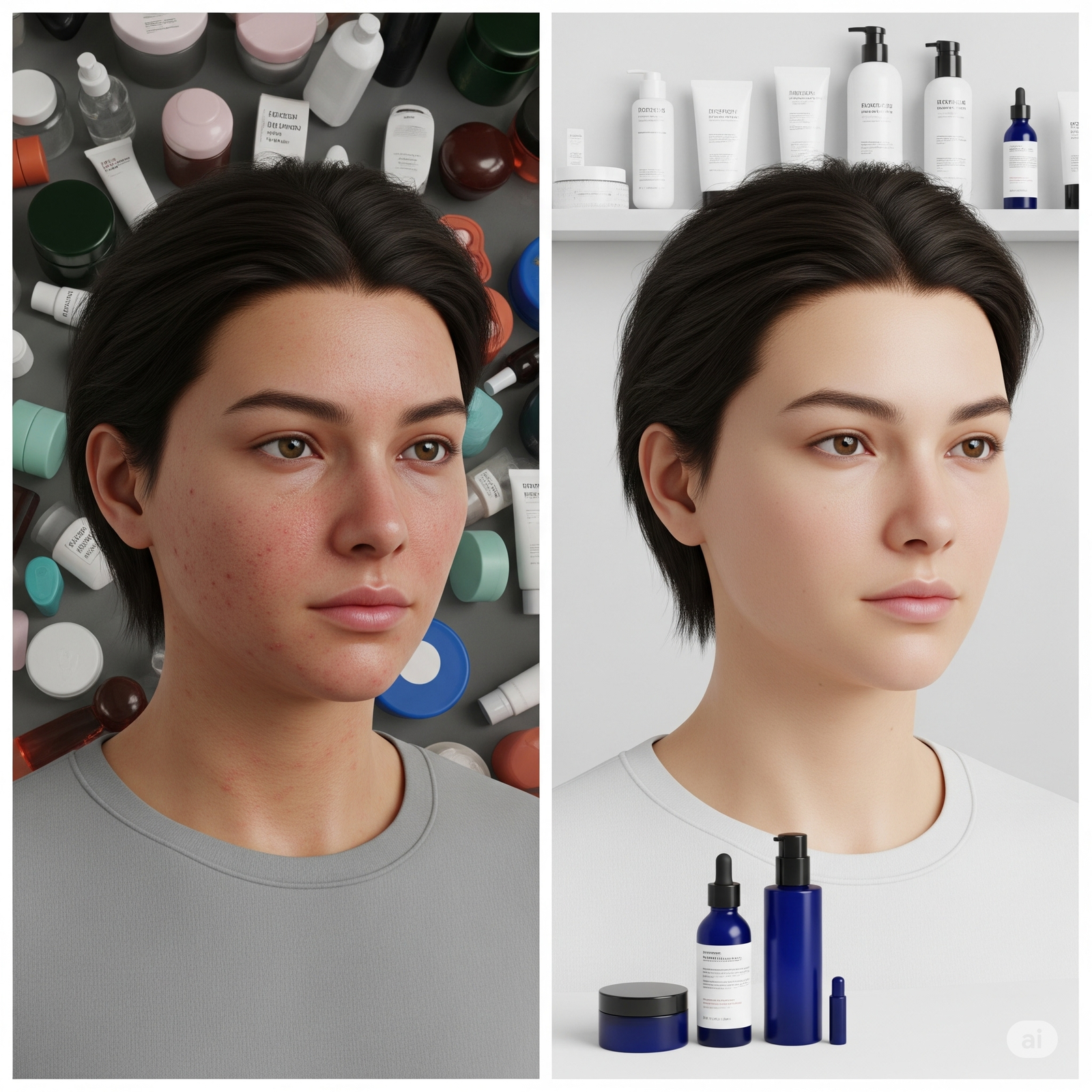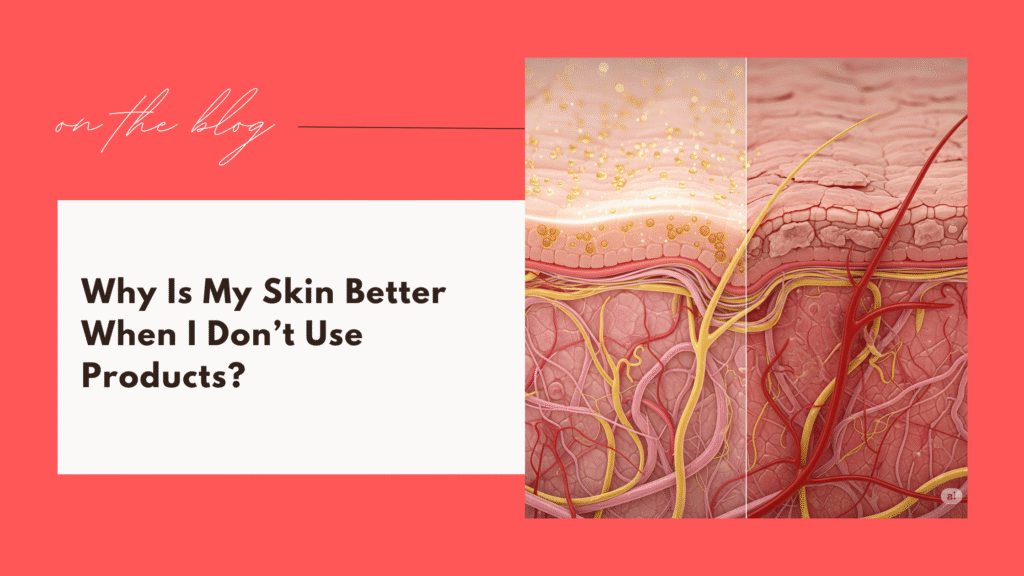If your skin looks better without skincare routine, congratulations — you’ve accidentally discovered a truth most beauty marketers don’t want you to find: sometimes less actually wins. This isn’t moralizing laziness; it’s biology, basic chemistry, and the rare magic of giving your skin time to stop doing damage to itself.
Below: a clear, practical breakdown of what happens when you stop slathering, how to test a minimal/no-product approach safely, and what to keep (hint: sunscreen stays).
What actually changes when you stop using products

-
Barrier repair: Over-cleansing and constant actives strip oils and damage the skin barrier. Stop the assault and the barrier repairs — less redness, less tightness, fewer random breakouts.
-
Less ingredient conflict: Your skin isn’t a lab. Mixing retinol + AHA + multiple acids + random “brightening” acids = irritation. Quit the cocktail and the inflammation drops.
-
Microbiome re-balance: Heavy soaps, antiseptic toners and fragranced oils can disturb the skin’s microbes. Let it rebalance and it often behaves better.
-
Lower stress response: Obsessing about products raises anxiety; stress raises cortisol; cortisol worsens acne and inflammation. It’s a loop. Stop the loop, skin calms.
Short version: many people’s skin looks better without skincare routine because they remove the things that were actively causing harm.
The usual culprits in “product-made” skin problems
-
Over-cleansing (twice-daily foam cleansers that squeak)
-
Over-exfoliating (scrubs + acids every day)
-
Mixing active-heavy products (retinoids + vitamin C + AHA nightly)
-
Fragrances and essential oils (common irritants)
-
Heavy occlusives for the wrong skin type (pore-cloggers on acne-prone skin)
If any of the above are in your routine, your first experiment should be removing them — not buying another serum.
A safe 4‑week “Less Is More” test (do this, don’t wing it)
Goal: See whether your skin truly benefits from fewer products without risking long-term damage.
Before you begin: Photograph your skin in natural light and note current issues (redness, texture, breakouts).

| Week | Routine | Key Actions | What to Observe |
|---|---|---|---|
| Week 0 – Prep | Not yet started | Toss expired products; keep only gentle cleanser, fragrance-free moisturizer, sunscreen | Take “before” photos, note redness, texture, breakouts |
| Week 1 – Water & Gentle Cleanse Only | AM: Splash with water → sunscreenPM: Gentle cleanse once | Avoid all actives & extras | Redness reduction, fewer breakouts, less tightness |
| Week 2 – Keep the Basics | AM: Gentle cleanse if needed → sunscreenPM: Cleanse → light moisturizer (if dry) | Maintain short, consistent routine | Hydration balance, skin comfort |
| Week 3 – Observe & Log | Same as Week 2 | Track progress; avoid reintroducing actives yet | Steady improvement or plateaus |
| Week 4 – Reintroduce One Product | Add one targeted product (e.g., niacinamide) | Patch test; use for 2 weeks before adding more | Any irritation, breakout, or improvement from new product |
If you have acne, eczema, or rosacea: do this under guidance or skip to “minimal medical approach” below.
What you should never stop using (even if “no products” is the vibe)
-
Sunscreen — non-negotiable. UV wrecks everything.
-
Gentle cleanser (if you sweat/makeup) — don’t sleep in grime.
-
A simple moisturizer if your skin is dry or compromised.
Think of sunscreen as skin insurance — not vanity. Even the “no-skincare” crowd keeps this policy.
If your skin improves, what next?

-
Keep the pared-back routine. Celebrate.
-
Reintroduce one targeted product every 2–4 weeks, patch-testing each.
-
Make lifestyle tweaks permanent: sleep, diet, hydration, less stress, cleaner pillowcases.
If your skin only improves when you’re using nothing because of a specific medicine you stopped, or because you stopped picking, adjust accordingly — don’t assume nothing is always the answer.
If your skin gets worse
-
Re-add a gentle moisturizer and stop any stripping or acidic steps.
-
Avoid DIY harsh treatments.
-
If severe reaction or infection: see a dermatologist. Fast.
Real people on Reddit & Quora
u/NotTheSerumGuy – r/SkincareAddiction:
“I went no-serum, no-toner for a month and my redness calmed. Looks wild, but my face finally stopped compensating.”
Quora user:
“My grandma used only coconut oil and sun avoidance — she had great skin. Genetics + lifestyle > product obsession.”
Quick comparison table
| Approach | Steps | Typical Outcome |
|---|---|---|
| Full routine (8–12 steps) | Cleanser, toner, essence, multiple serums, heavy moisturizer, masks | Can address many issues — high irritation risk if misused |
| Minimal routine (3–4 steps) | Gentle cleanser, moisturizer, sunscreen ± 1 targeted product | Balance of protection + low irritation |
| No-products (water-only) | Splash or no routine; sunscreen still recommended | Calmer skin for some; risky for those with acne/eczema |
FAQs
Many people notice calmer skin in 2–4 weeks. Full barrier repair can take 6–12 weeks.
Sometimes but not reliably. Acne often needs targeted treatment (salicylic acid, benzoyl peroxide, prescription meds).
You must still use sunscreen and rinse sweat; heat and sweat increase bacterial growth — avoid skipping hygiene.
Don’t do radical stops without a derm. A simplified medical routine is safer (fragrance-free, barrier-supporting products). How long until I see improvement?
Can going product-free clear acne?
Is this safe during summer/hot climates?
I have eczema/rosacea — should I try this?


